Sometimes the allure of a print is too powerful for me to resist.
You may remember that I bought this dress in the spring, but returned it because it was too tight through the waist?
I reckoned — then — that a larger size would require expensive alterations through the shoulders, bust, and skirt, and therefore was too costly.
But six months later, it was significantly marked-down and the calculus changed.
I bought it two sizes larger than my regular size and it may be a little loose in the waist. Here, I have added a belt that just happens to match the dress perfectly. Looking at this photo, I wonder if I should (could) tighten the belt.
Surely you remember this denim jacket? I bought it and so did one of my partners! It’s the perfect length to wear with a dress because it hits at the waist.
There is a lot of fabric in this dress, but it’s all silk chiffon — very light and fluid. The dress whispers when I walk.
Come closer and take a gander at the pattern. It reminds me of Josef Frank, but The Photographer thought it had the look of an African textile.
Speaking of African textiles, an item in the New York Times about the Philadelphia Museum of Art’s exhibit of Vlisco fabric and fashion recently caught my eye. The story of Vlisco reads like a case note on the Law of Unintended Consequences.
Vlisco is a Dutch textile manufacturer that began producing imitation batik fabrics for export to Indonesia in the mid-nineteenth century. (Why, why? Weren’t there batik fabrics already there?) A few decades later, the fabrics became hugely popular in West Africa (what, how?) and have been used continuously in high fashion design there ever since. People think that the fabrics are indigenous to Africa, but they aren’t.
Apparently, the earliest Vlisco fabrics were printed more cheaply than traditional batik (roller printed instead of block-printed) and were intended to be an affordable alternative for Indonesians. The Indonesians literally weren’t buying it; they did not care for the Dutch innovation/intervention and effectively rejected the product. So the fabric was used for bartering in West Africa along the trade route between the Netherlands and Indonesia . . . where it attained tremendous popularity and status. At some point, Vlisco went high-end and its most luxurious fabrics today are manufactured through an elaborate, proprietary 27-step process involving machine and hand treatment. Now counterfeit Vlisco is an issue, which seems like an ironic twist for the purveyor of imitation batiks.
This would be a fun daytrip: going to Philadelphia to see the exhibit and stopping by the Galbraith & Paul annual sample sale.
Dress: MSGM; Jacket: Marques/Almeida; Shoes: Tory Burch; Bag: Car Shoe

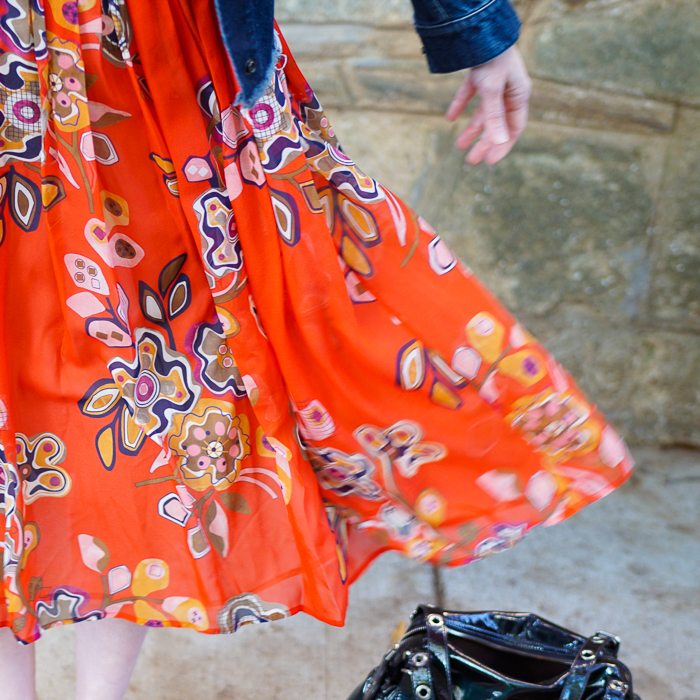
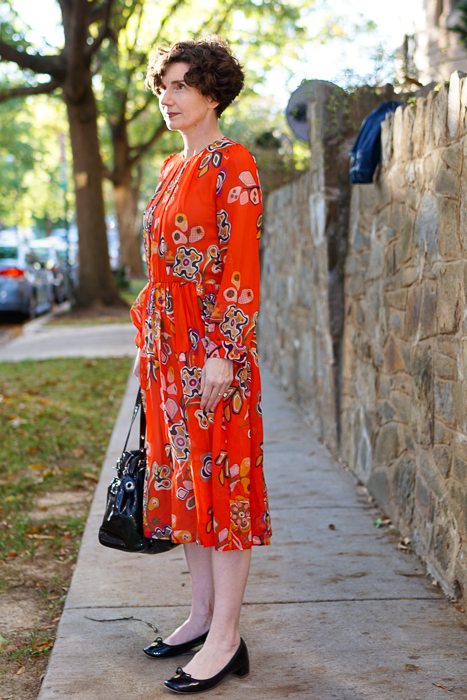
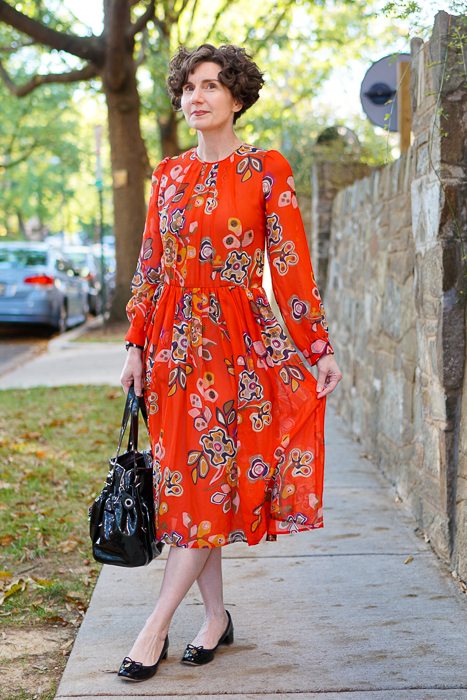
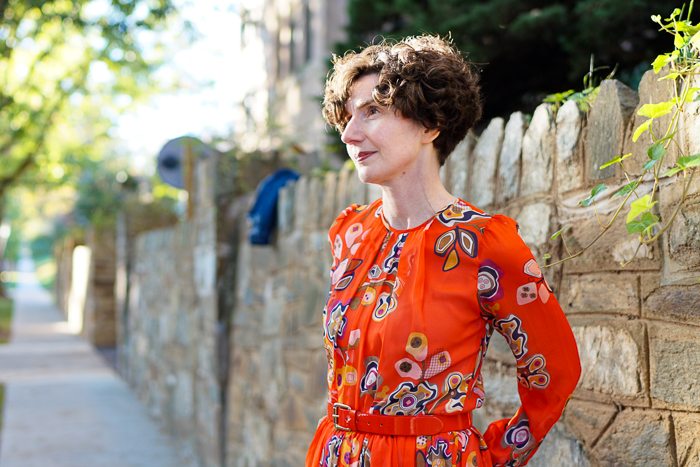

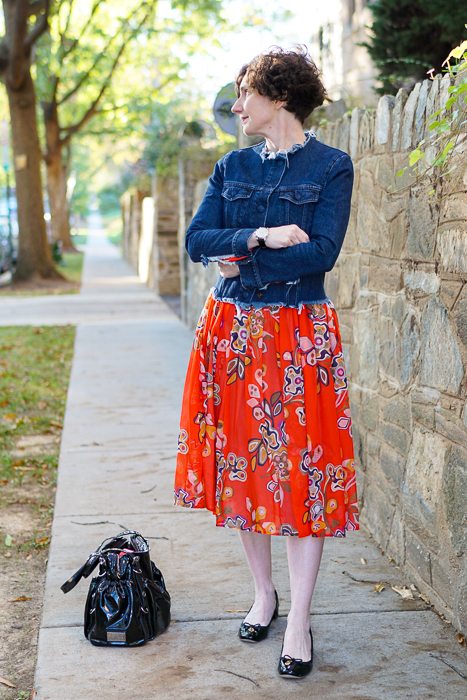
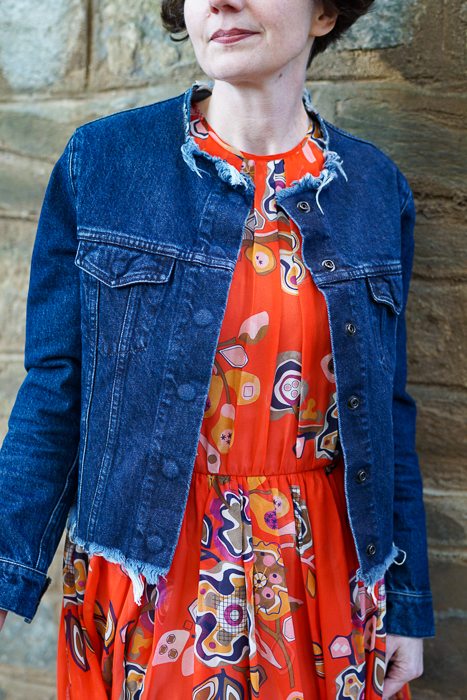
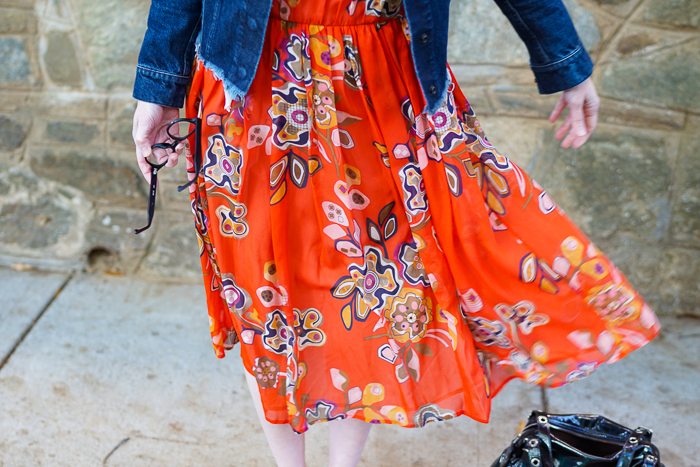
Of all the dresses in the post last Spring this one comes off looking the most traditional, which definitely works in it’s favor in terms of being able to wear it lots of place.
This is utterly lovely. I love dresses and wear them almost exclusively—radical femininity!
Gorgeous dress! I love the color and wish I could wear orange. Love the idea of swooshiness.
The dress is so cheerful. You wear orange well. I enjoyed the Vlisco design history’.
Love the dress with that very fun jacket — and the history lesson, too! Fascinating. Hoping I can work that into conversation someday.
The fabric is so pretty and the history is interesting well. The jacket is fitted enough and short enough to really work well. Kate loved it
Beautiful dress and the jacket is perfect with it.
What a divine dress that would work in so many instances – a real stand out! And it’s modest 🙂 and looks amazing with denim!
Absolutely gorgeous. Love!
Cool story.
The Vlisco exhibit is fabulous! If you go, be forewarned that it is over in the Perelman building, not the main PMA. And only one (dense) room. But in conjunction with the big expo on the art of the Mexican Revolution, well worth the trip. So sad there was no catalog.